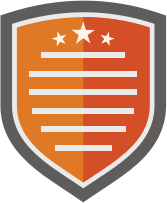Planning this lesson from start to finish utilizing the processes given was easy at the beginning, but then challenged my creativity.
I believe thinking through SAMR pushed my creative boundaries, especially when trying to come up with ways to make a math lesson NEW. However, I do think I was successful in doing so.
Typically, we often take slope-intercept form, give students equations and have them draw the lines. Introducing technology was a bit creative, but where I feel the most creativity came into play was as the SAMR process progressed.
When trying to think through how to redefine learning I wanted students to utilize technology, explain real-world problems and have conversations with peers. It is in this way that I believe my lesson is Novel, Effective, and Whole. Students are using technology to complete a simple task. Yet, they have to dissect the steps and explain to their peers the process of drawing a line. Students also must present slope-intercept form in a real-world problem, such a cell phone bill with a base cost and price per minute, or a start balance in a bank account and how long until it hits zero. Students then will be engaging with one another, asking questions and explaining their understanding through the comment section of YouTube.
I believe I have been a designer through this lesson because I have thought through what makes this lesson novel, or new and different from a typical slope-intercept form lesson. It is effective because I have created ways for students to explain and question each other's thinking. It is whole, because I have used technology in a way that gets students interacting, creating, and inquiring about the process behind slope-intercept form and answer the ever present of "When will we use this in real life?" that is so often heard in the math classroom.
I believe thinking through SAMR pushed my creative boundaries, especially when trying to come up with ways to make a math lesson NEW. However, I do think I was successful in doing so.
Typically, we often take slope-intercept form, give students equations and have them draw the lines. Introducing technology was a bit creative, but where I feel the most creativity came into play was as the SAMR process progressed.
When trying to think through how to redefine learning I wanted students to utilize technology, explain real-world problems and have conversations with peers. It is in this way that I believe my lesson is Novel, Effective, and Whole. Students are using technology to complete a simple task. Yet, they have to dissect the steps and explain to their peers the process of drawing a line. Students also must present slope-intercept form in a real-world problem, such a cell phone bill with a base cost and price per minute, or a start balance in a bank account and how long until it hits zero. Students then will be engaging with one another, asking questions and explaining their understanding through the comment section of YouTube.
I believe I have been a designer through this lesson because I have thought through what makes this lesson novel, or new and different from a typical slope-intercept form lesson. It is effective because I have created ways for students to explain and question each other's thinking. It is whole, because I have used technology in a way that gets students interacting, creating, and inquiring about the process behind slope-intercept form and answer the ever present of "When will we use this in real life?" that is so often heard in the math classroom.



